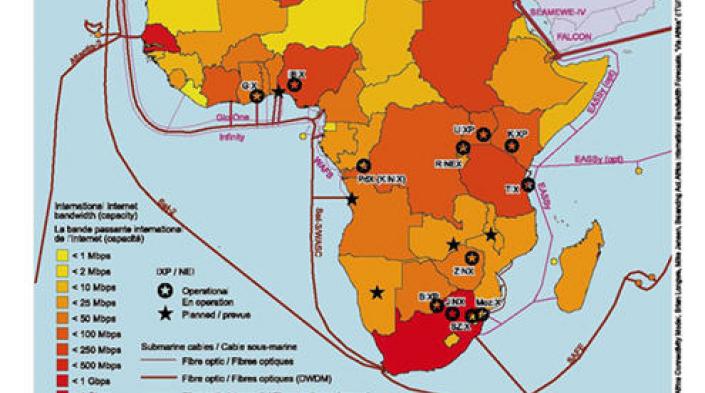
Page last updated on
In Africa, APC’s main focus is on access to infrastructure. Africa currently has to pay for some of the most expensive bandwidth in the world and the hard currency paid leaves the continent. Because East Africa does not have international fibre connections it is paying even more than West African countries connected to the monopoly-controlled SAT3/WASC cable.
APC’s FibreForAfrica.net site provides basic information about international bandwidth in Africa, its costs and the existence of monopoly access to it. It focuses especially on the proposed East African cable projects and the ending of the monopoly of SAT-3.
SAT-3/WASC research
The “SAT-3/WASC post-implementation audit: Country case studies” is a large scale research project that documents the effect that the SAT-3/WASC submarine cable has had on communications on the African continent, as well as the opportunities that have been missed and the reasons behind these. The overriding objective of the research is to identify and document both positive and negative lessons that can be learned from the development, implementation and management of the cable. The project began in 2006.
The APC SAT-3 research, The Case for Open Access Communications Infrastructure in Africa: The SAT-3/WASC cable focuses on the entire life cycle of the cable to date and analyses:
1. What happened and why? A global view of the construction of the cable.
2. What is happening and how? National perspectives of the effect SAT-3 has had on the ICT environment in Angola, Cameroon, Senegal and Ghana.
3. What can be made to happen? Lessons to be learned, negative factors to avoid, positive points to imbibe.
The results of the research are useful in two ways. First, it gives current and future infrastructure-oriented campaigns better insight in explaining the problems that have occurred as a result of the adoption of a particular set of decisions regarding SAT-3/WASC. In this way, arguments pointing to the pitfalls of “closed” decision-making are be supported by the presentation of facts and real-life examples.
Second, despite the conditions under which SAT-3/WASC was implemented, the results of the study can be useful to campaign partners and operators should a similar direction be taken on current and future infrastructure projects.
East African Submarine Cable System (EASSy)
The cost of bandwidth in Africa is a significant barrier to the region’s development. It makes it more expensive to do business here: for example, it is harder for new call centres to compete with their global competitors. And in terms of its social development, there are many areas where cheap international access would give East African citizens, professionals, students and decision-makers access to knowledge, expertise and involvement in regional and global discussions.
In response to these issues, the East African Submarine Cable System (EASSy) consortium was set up in 2003 to build a fibre route that will connect countries on and near the east coast of Africa. However its governance and the terms under which access to the new capacity will be available were not set. The policy issue at stake was whether it would follow the monopolistic practices of its predecessor, the SAT-3/WASC/SAFE submarine cable on the west coast of Africa, or offer an “open access” regime to increase competition and lower prices, and give consideration to development needs.
Working with partners, APC has co-organised consultations and workshops with key groups including regulators, the pressure from which has indirectly caused a downward trend on SAT-3 prices and the opening up of EASSy as the consortia try to pre-empt regulatory intervention. Follow APCNews and FibreForAfrica.net for the latest developments.
Image: IDRC


